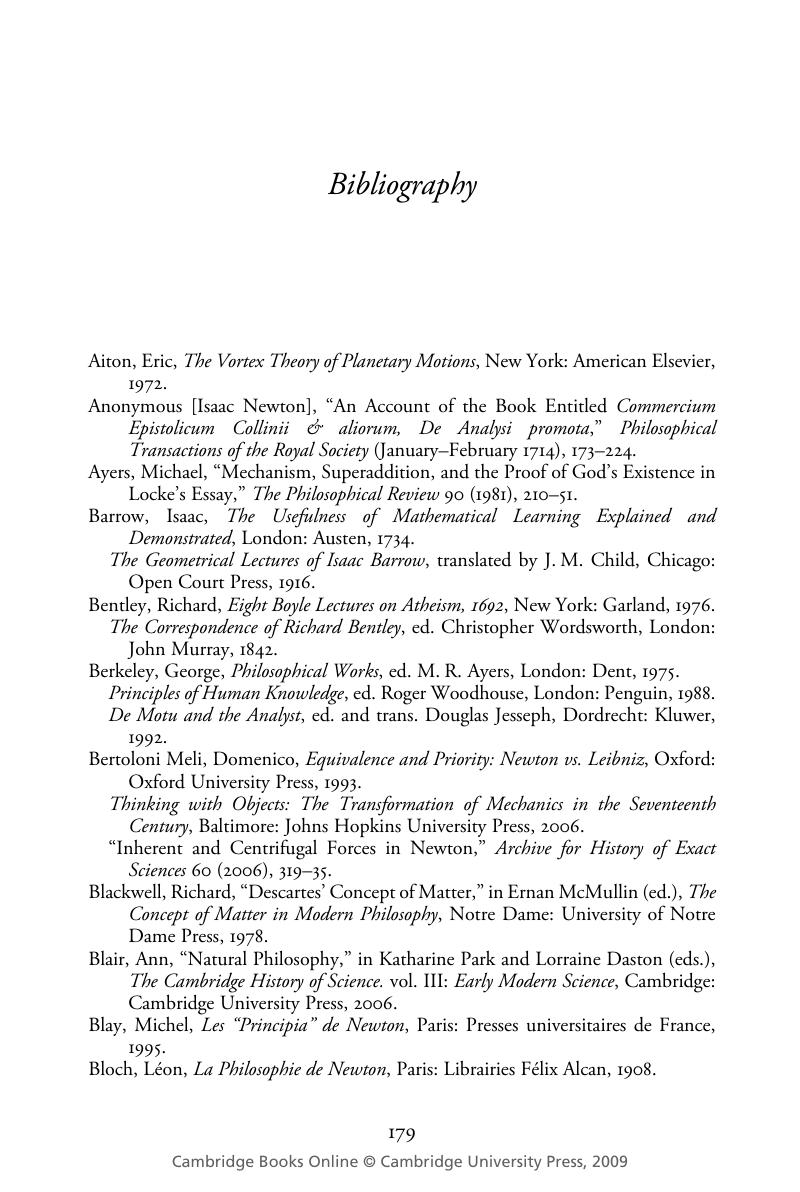Book contents
- Frontmatter
- Contents
- Preface
- Note on texts and translations
- 1 Newton as philosopher, the very idea
- 2 Physics and metaphysics: three interpretations
- 3 Do forces exist? contesting the mechanical philosophy, I
- 4 Matter and mechanism: contesting the mechanical philosophy, II
- 5 Space in physics and metaphysics: contra Descartes
- 6 God and natural philosophy
- Bibliography
- Index
- References
Bibliography
Published online by Cambridge University Press: 22 September 2009
- Frontmatter
- Contents
- Preface
- Note on texts and translations
- 1 Newton as philosopher, the very idea
- 2 Physics and metaphysics: three interpretations
- 3 Do forces exist? contesting the mechanical philosophy, I
- 4 Matter and mechanism: contesting the mechanical philosophy, II
- 5 Space in physics and metaphysics: contra Descartes
- 6 God and natural philosophy
- Bibliography
- Index
- References
Summary

- Type
- Chapter
- Information
- Newton as Philosopher , pp. 179 - 189Publisher: Cambridge University PressPrint publication year: 2008



